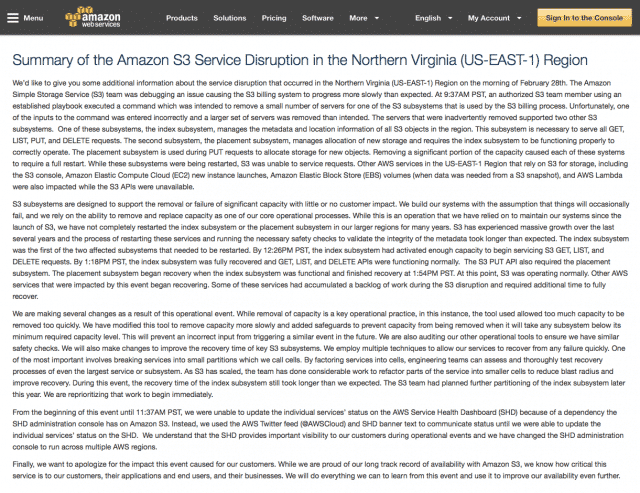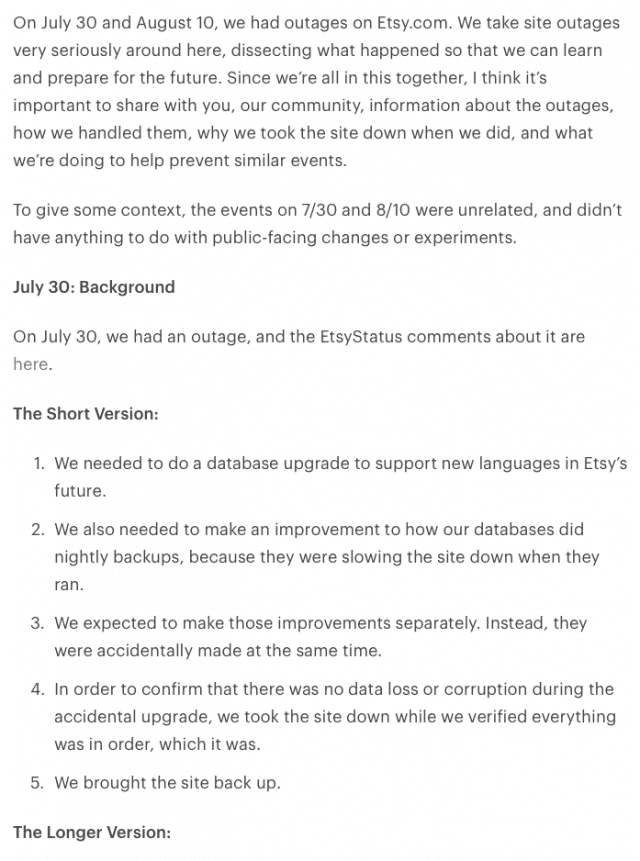The Mea Culpa Meta Game

I love the psychology that goes into post-outage write-ups. Amazon just had a doozy >, with S3 going down and crippling much of the internet for a day. The image above captures their approach to the narrative, which I would classify as dense and opaque.
Key attributes of the write-up include:
Small text
Formal language
Massive paragraphs
No bullets or numbered lists
No images
The message they’re trying to send to your brain without you knowing is:
You probably don’t have time to read it all the way through.
It’s lots of text, so it’s thorough.
It’s small text, so it’s probably deep and technical.
The response was legitimate and my confidence in them is restored.
The Etsy counter-example
And here’s a near-opposite approach, by Etsy.

Here we have:
Larger, more readable text
Shorter, more digestable paragraphs
Relaxed language
An intro followed by a numbered list
What they’re trying to communicate is quite different:
We’re honest and approachable.
We will never lie to you.
We take our lumps when we deserve them.
You can trust us to do the right thing for you.
Summary
Different customers will respond to different messaging, and situations might also call for different approaches. Maybe when you take down half the internet you need to be a bit more formal than when there’s a hiccup in some API.
Post-outage announcements are clearly more art than science, but I find the difference in approaches fascinating. I personally prefer the Etsy approach to Amazon’s, as honesty and transparency rank high on my list of desired traits in a partner.
Either way, the next time you read one of these, think about the non-textual communication that’s being used through text size, paragraph density, tone, and similar meta. It might tell you more about the company you’re dealing with than the text itself.